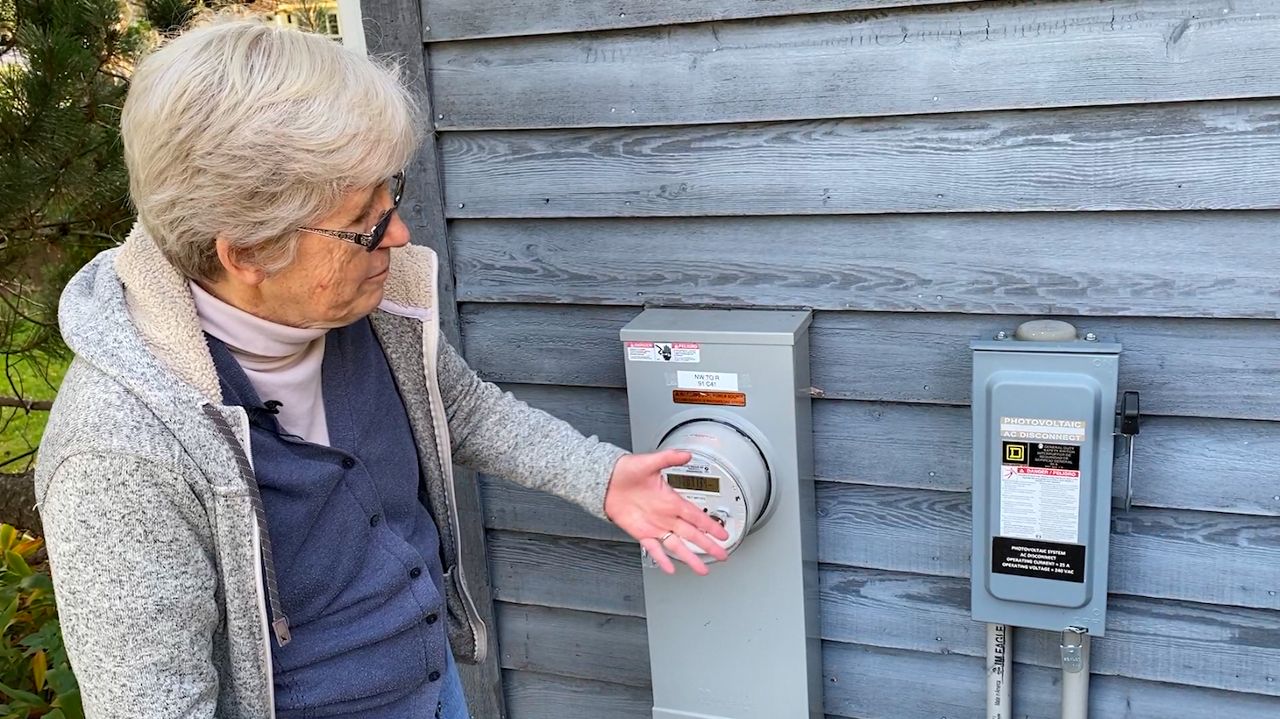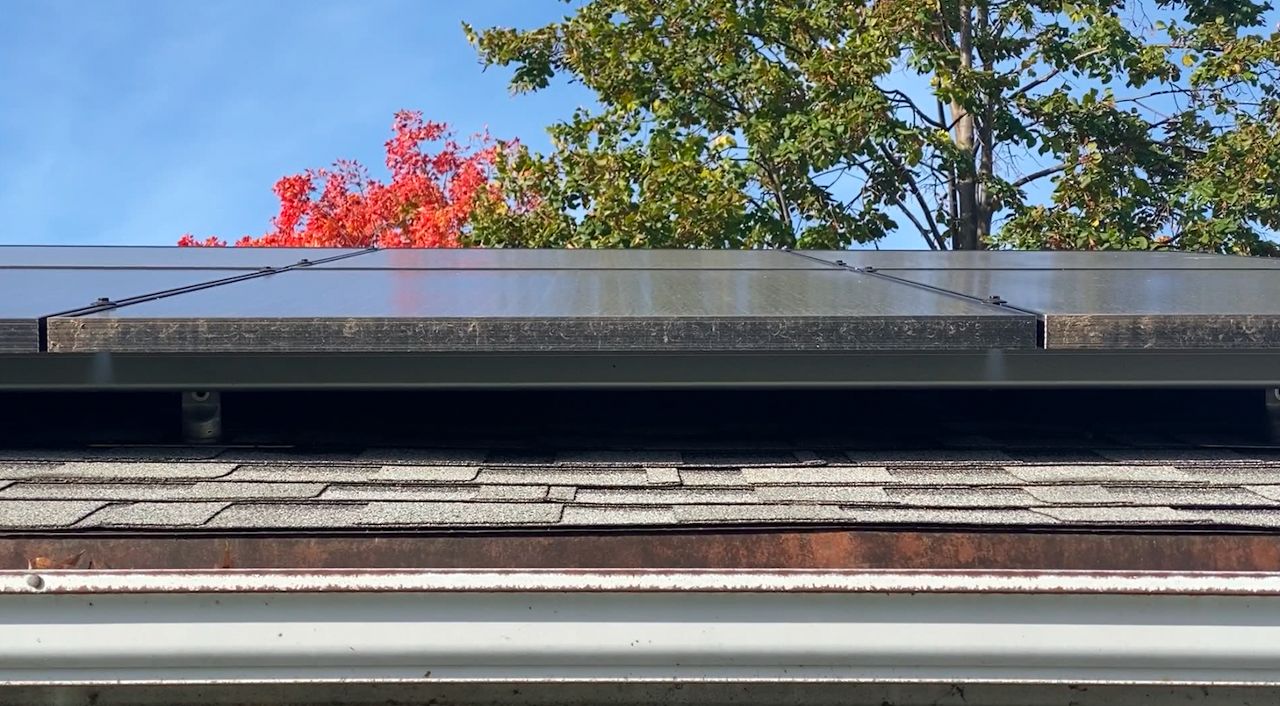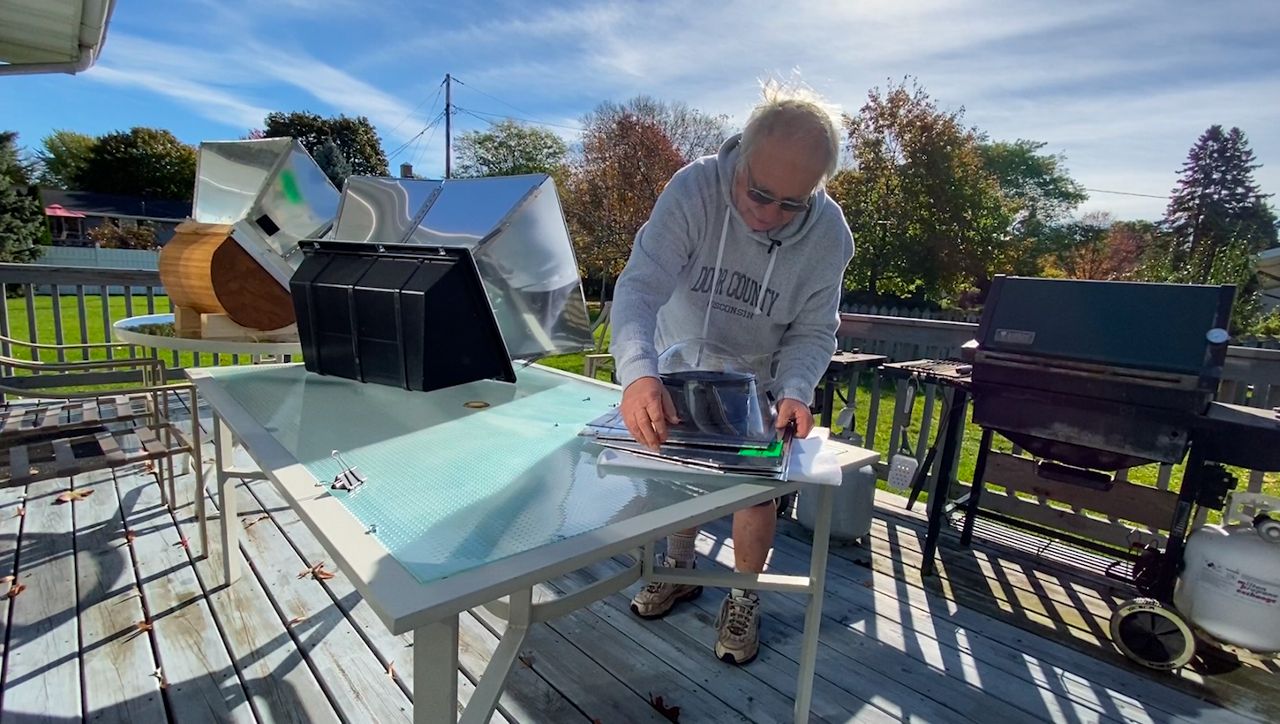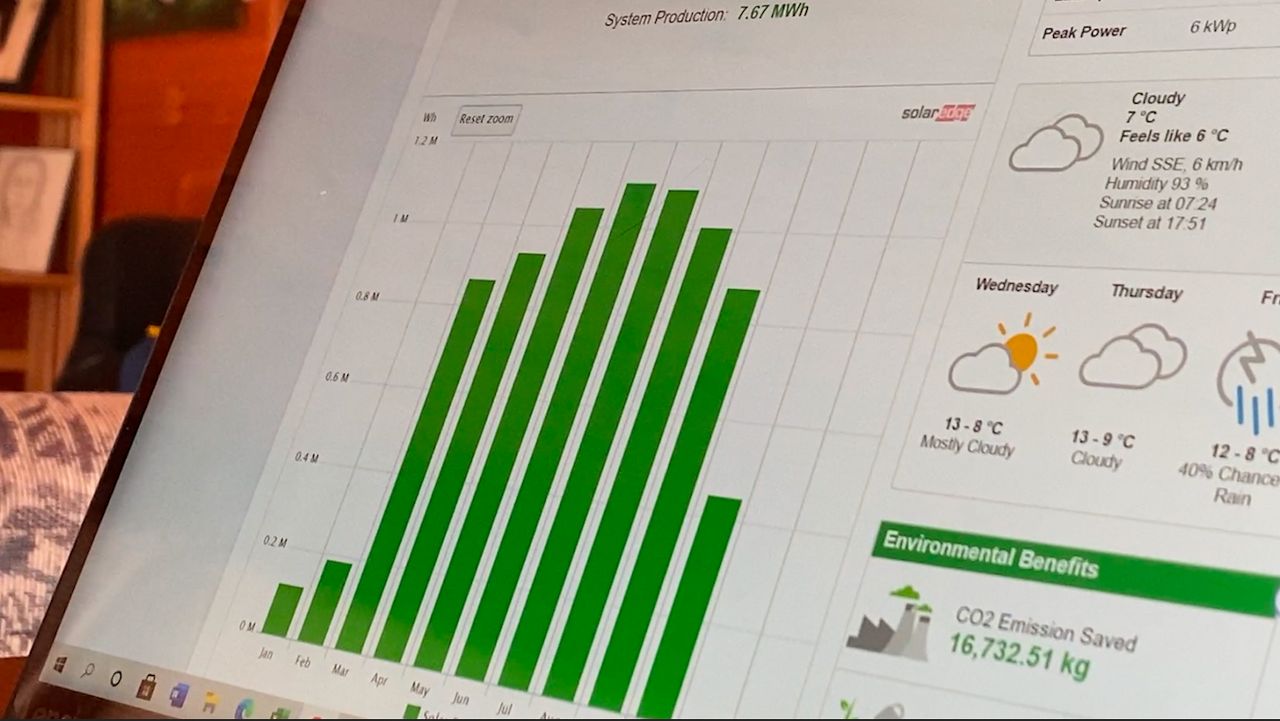OSHKOSH, Wis. — The Hallquists decided three years ago to add solar power to their home and now they’re helping others who would like to do the same.
They recently held an open house in Oshkosh to help advise anyone interested in the process. When Pat Hallquist was setting her home up for visitors, she wasn’t sure what to expect.

“I got a chair out and I had my book to read, and I never got the book read,” she said. “I didn't eat lunch.”
Twenty-six people showed up. More if you count curious friends, and also a couple who had the incorrect date. They arrived one week late, but Pat Hallquist still talked with them.
Their system cost under $13,000 and she estimates that it will pay itself off before the warranty on the panels runs out. The Hallquists are environmentally conscious, but they also considered the long-term financial implications of going solar.
“You're going into retirement and your electricity costs will be lower,” said Pat Hallquist. “That's a good idea, right?”

The panels have lowered monthly energy costs. If the house produces an abundance of energy, they sell it back to the power company.
“Of course, if we make more electricity than we use, then they will buy it back from us, but at a different rate than we pay them now,” said Pat Hallquist.
But this solar couple doesn’t stop with just the panels. Pat’s husband Tom builds sun-powered cookers.
“This one could fit in a suitcase, be very portable and very durable,” said Tom Hallquist.

In sunny areas, where cooking fuel is scarce, his cookers will do the trick.
“It acts mainly as a slow cooker,” said Tom Hallquist.
In the past, he’s sold them online but mainly lends them out or gives them away now.

“Sometimes, like a Peace Corps volunteer or a missionary will take one along for themselves to make cheesecakes and stuff like that,” said Tom Hallquist.
As Wisconsin heads into winter, the solar returns from the cookers and panels will diminish. Pat Hallquist enjoys tracking the status of her panels throughout the year.
“It looks like June was the best month," Pat Hallquist said. "July was a close second."
The winter months see less direct sunlight, but there are other reasons for energy dips during that time.

“Some of that in January and February is due to snow on the panels,” Pat Hallquist said. “The snow will melt if you’re patient, but there’s not a good way to remove it right away.”
Whether it's June or February, this couple will likely be thinking of promoting solar energy.
For anyone interested in learning more about solar energy, they can visit https://www.renewwisconsin.org/, https://www.focusonenergy.com/ or https://www.energystar.gov/ for more.



